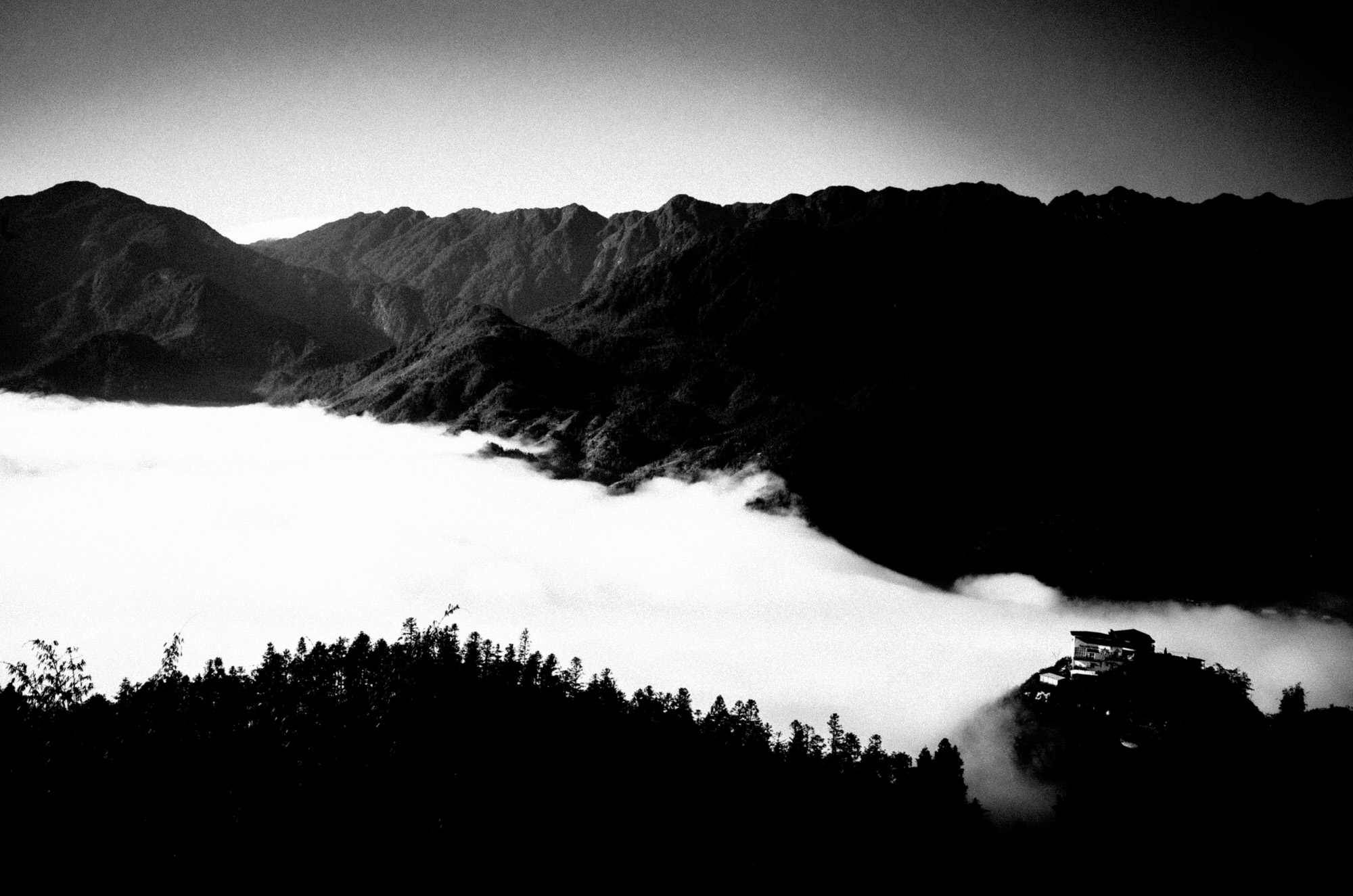
Dear friend,
I want to write you a letter and some personal reflections about photographing landscapes— particularly, how to shoot “non-boring” landscapes, which aren’t cliche.
I love nature

First of all, I love nature. I was a Boy Scout when I was younger (even became Eagle Scout), and I spent a lot of time outdoors. I loved hiking, camping, drinking hot cocoa and roasting marshmallows around the camp fire, and to enjoy the fresh brisk air in the mountains.
When I first started photography, like any good photographer, I started off shooting landscapes. After all, who doesn’t love a good sunset photo?
The problem is after a while, I got bored with landscape photography. Once you’ve seen one sunset, you’ve seen them all.
I wanted more of a challenge, therefore I discovered street photography. Shooting people is far more difficult than shooting a bunch of rocks. Because people will yell at you (rocks don’t).
But as of late, I’ve been returning to shooting landscapes. But I wanted to photograph and capture the feeing I got from the landscape — rather than capturing a pretty, HDR, and colorful landscape.
Capturing the feeling of a landscape

I feel a sense of Zen, calm, and elation when I see a beautiful landscape. But the problem is, I can never capture this majesty in a photograph. This is often why for a long time — when I would go on hikes, I wouldn’t take any landscape photos. I would just enjoy the landscapes, without feeling obliged to photograph it.
However for some reason, whenever I shoot a landscape in black and white, it feels different. I feel like I can capture more of the emotion of a scene in monochrome, than in color.
Perhaps this is because in black and white, I abstract the scene. It no longer becomes a real landscape. Because ‘real’ landscapes are in color. That is what we see and perceive with our eyes.
But perhaps I feel my images better in black and white. Because my feelings are more abstract than what I see and perceive in reality.
The cliche thing is that black and white is more “artsy.” And to a certain extent, it kind of is. This is because we don’t see the world in monochrome. So of course, there will be novelty to monochromatic images.
But going back to the point at hand — I have been shooting a lot of high-contrast, monochromatic landscapes, and have been having a lot of fun. Not only do I feel I can capture the emotion of a landscape better in monochrome, it feels more unique and personal to myself.
How I shoot landscapes

Nowadays for my monochromatic landscapes, I just shoot with the Ricoh GR II, in RAW, with high-contrast black and white mode as a preview. Then when I import my photos into Lightroom, I will apply my “Eric Kim 1600 Monochrome” preset (which looks pretty similar to the high-contrast black and white JPEG mode of the Ricoh).
I shoot in “P” (program) mode, usually ISO 1600, center-point autofocus.
When I’m shooting a landscape, I try to focus on the edges of the frame. I’ve also been shooting mostly at 28mm (the native focal length for the Ricoh GR). I try to keep the scene as simple and minimal as possible, by cutting out what I think is superfluous “fat” around the edges of the frame. Furthermore, I play a lot with the exposure-compensation (with bright scenes, I usually set my camera to -2/3 exposure-compensation).
I only shoot landscapes when I feel an emotion with the scene. And when I go home and import my photos into Lightroom, I select the photos based on my emotions as well. I don’t think too much about choosing the landscapes. If I look at one of my landscape photos and I feel my heart flutter a bit, I choose it.
Advice for you

If you’re reading this, I assume you’re more into street photography/urban photography. Yet I still think there is a nice balance between nature photography and street photography.
Often when I get overwhelmed by the city, I like to retreat to nature, and “Zen” out. But after a while, nature gets a bit boring— so when I get back into the city, I feel alive again.
I feel having this alternative between nature-city photography allows us to be more creative. I think being a human in today’s modern society is this tension between nature and our man-made industrial environment. We need both to thrive.
When it comes to shooting landscapes, only do it if you want to do it. There are no “rules” when it comes to shooting landscapes. Shoot monochrome, color, whatever. You just want to re-create the emotion you had of the scene when you first perceived it. And we all see the world differently.
In this way, post-processing your landscape photograph is important, because you want to re-create the emotion you had when you saw the scene. Some of us see in black and white, and others color. But my advice is treat post-processing like salt. Some salt is good to improve the flavor of your food. Too much salt will ruin your dish, and it is much more difficult to “un-salt” your food (once you’ve added too much salt). This is why I generally don’t like HDR (to me, HDR is good in mild doses— but with too much HDR, it is like adding a crapload of salt into your food).
But at the end of the day, follow your own taste.
Shoot landscapes with your heart, and choose your favorite photos with your heart.
Love nature, and love the city.
I think we can do both.
Always,
Eric

